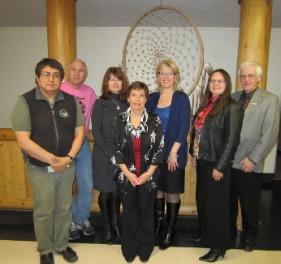On March 27 Gold Trail became the 16th school district in British Columbia to implement an anti-homophobia policy.
“We didn’t have any specific incident that was of deep and dire concern that was the cause of looking at this,” says board chair Carmen Ranta. “I think it was more of an overall concern.
“We know from the media that students have committed suicide in Canada. We know about the difficulties with these bullying issues surrounding sexual orientation and gender identity in schools and thought that we wanted to be proactive.
“It really has created more attention outside of the district, so far, than it has inside the district,” she adds.
Gold Trail school district is located in south-central BC about an hour north of Hope. The major communities there include Ashcroft, Cache Creek, Clinton, Lillooet and Lytton.
With 1,138 students, Gold Trail is one of the smallest school districts to implement an anti-homophobia policy. Unlike other districts that have passed anti-homophobia policies, its policy was not created in response to a request from staff or students but was initiated by trustees during a routine committee meeting. This is a first, according to the BC Teachers’ Federation.
“I’m certainly pleased that the initiative was taken by the board and that they did in fact bring it for the most part on their own and passed it with very little debate,” says Gold Trail Teachers’ Association president Cameron Rittinger. “I was at the board meeting last night, and they reported that they received little controversy within the community to it and they were very encouraged by that.”
Trustee Christopher Roden says the board received no feedback during the month the draft policy was posted for public input.
“We had expected more resistance,” he says. “We expected more input and there was none. People had the opportunity to express their views on our site while the policy was under consideration.”
While the policy did not receive formal input from the community, Roden says a school video project, which was created after the board decided to implement the policy, reinforced his feeling that they were on the right track.
“I think we’re conscious that we have gays in our community and in our schools,” he says. “Knowing the problems that they can suffer, we thought it was important that we have a policy in place to make it quite clear where we stood on the matter.”
In 2011 digital media students at Ashcroft Secondary created a 55-second claymation video in support of their lesbian, gay, bisexual and trans peers. The video, which elicited a response from Rick Mercer, included the message “It’s okay to be gay.”
“The kids who made it were really closely linked with someone in the gay community; we had one student in our school who was out,” says Ashcroft teacher Sara Drennan. “Dealing with homophobia is a part of some people’s everyday life, and the students wanted to say something about it.”
Ranta believes people in smaller communities have a greater incentive to adopt a more tolerant approach.
“In a small community you get to know a person before you learn about what they stand for, what interests they have, what religion they are or whatever,” she says. “So the relationships we form, because there is only one drugstore and grocery store in town, those relationships come first, and other details of life that might stigmatize them come second.”
While she is adamant that the policy is necessary right now, Ranta believes some policies have a window of time and hopes that an anti-homophobia policy will be unnecessary in the future.
“We just got rid of our AIDS policy,” she explains. “We actually had a policy with AIDS in the title, which reflects the fear mongering and worrying about this disease. We still have a policy on blood-borne pathogens, but it certainly doesn’t have the stigma for people living with HIV/AIDS. This shows how policy does reflect the times.”
Ranta says the new policy will affirm and expand existing practices and that the board is currently drafting guidelines.
”I don’t think this will mean a dramatic change in how schools will function or operate other than providing clarity around direct principles of bullying in this area,” she says. “It’s meant to be preventative as well as proactive.”
Here is the claymation video that digital media students at Ashcroft Secondary produced to support their gay peers.

 Why you can trust Xtra
Why you can trust Xtra


